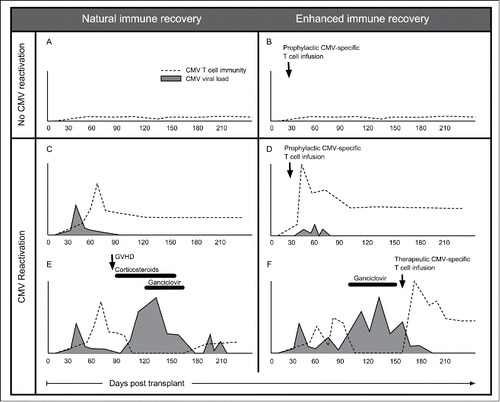Figures & data
Figure 1. CMV immune recovery post-allogeneic HSCT. (A and B) Absence of CMV reactivation does not stimulate clonal expansion of CMV specific T cell clones and detectable CMV immunity is low or undetectable. When CMV-VSTs are administered prophylactically no expansion of the transferred clones is observed. (C and D) Low level CMV reactivation is controlled by CMV-VSTs that recover in the first few months post-HSCT. Prophylactic or pre-emptively administered CMV-VSTs are seen to expand in vivo and produce long-lasting stable immunity that is detectable up to 10 y after transplant. (E) CMV immunity recovers and controls CMV without treatment in the first few months. Subsequent development of GVHD and administration of corticosteroids and other immune suppressive medications results in loss of CMV immunity and recurrent CMV reactivation requires treatment with antiviral pharmacotherapy. (F) After failure to establish an effective cellular immune response spontaneously, either due to treatment (as in E) or donor seronegativity, donor-derived or third party banked CMV-VSTs administered therapeutically can rescue patients refractory to standard therapies.

